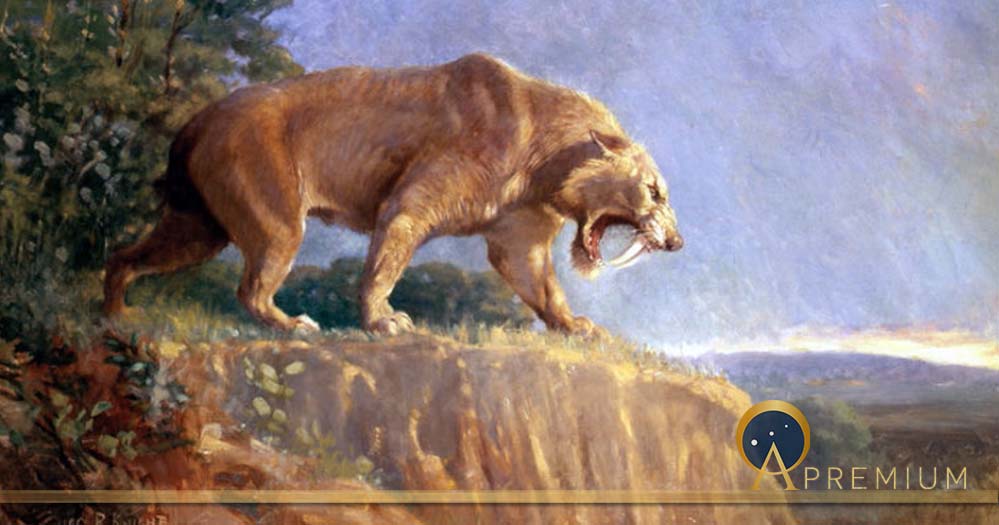The Deadliest Man Eaters In Mankind’s Evolutionary History
Humans are the most successful predator on the planet and stand sentinel at the spearhead of the planetary food chain, but this was not an achievement that came easy. Mankind’s ancestors had to fight and overcome some of the fiercest creatures imaginable to take the crown as the apex predator, but who exactly were these predators that have trimmed human population sizes since the dawn of time?

Smilodon is one of the most famous prehistoric mammals and the best-known saber-toothed cat, more commonly known as the saber-toothed tiger, that lived in the Americas during the Pleistocene epoch (2.5 mya – 10,000 years ago).(CC BY-SA 2.0)
Throughout mankind’s evolutionary path arguably the most common cause of death, was being eaten alive, beginning with the first primates who evolved about 65 million years ago when man’s ancestors were about the size of a monkey. Larger primates, gorillas, chimpanzees, orangutans and bonobos, representing modern man’s ancestors, evolved about 13 million years ago and about seven million years ago, hominids, including man’s direct ancestors, split from chimps and bonobos, so Homo sapiens, are about 200,000 years old.
According to a June 20, 2011 article in Smithsonian Magazine, by Rob Dunn, a biologist at North Carolina State University: “ Evidence of our historic fates (with predators) comes from knowing what eats monkeys or apes today, and from studying what ate now-extinct species.” For example, many of the best preserved fossils of hominids come from piles of bones at sites where predators devoured them and this informs scientists of the types of creatures who most often snacked on slow hunters. Here then, are the life forms that most often fed on man’s ancient ancestors.

Phylogenetic tree of the evolution of primates. (Andrea Jagher/CC BY-SA 3.0)
Prehistoric Land-based Human Predators
In prehistory humans were actively hunted by a range of ferocious beasts unlike any predators stalking man today, and their remains are mounted in the halls of many of the world’s museum exhibits appearing fictional more so than real animals. For example, giant bears ( Agriotherium), measuring about 2.7 meters (nine feet) in body length and weighing around 900 kilograms (1,980 pounds), making them larger than most living bears today.

This mandible bone tells scientists that Agriotherium had longer legs and shorter faces than other bears, with wide, short jaws that could generate enormous bite force. (Ghedoghedo/ CC BY-SA 3.0)
Another predator of early history were saber-toothed cats ( Homotherium, Machairodus, Megantereon) that inhabited North America, South America, Eurasia and Africa during the Pliocene and Pleistocene epochs.
Like this Preview and want to read on? You can! JOIN US THERE ( with easy, instant access ) and see what you’re missing!! All Premium articles are available in full, with immediate access.
For the price of a cup of coffee, you get this and all the other great benefits at Ancient Origins Premium. And - each time you support AO Premium, you support independent thought and writing.
Ashley Cowie is a Scottish historian, author and documentary filmmaker presenting original perspectives on historical problems, in accessible and exciting ways. His books, articles and television shows explore lost cultures and kingdoms, ancient crafts and artifacts, symbols and architecture, myths and legends telling thought-provoking stories which together offer insights into our shared social history. www.ashleycowie.com.
Top Image: Painting of Smilodon populator from the American Museum of Natural History by Charles Knight (1903) (Public Domain)
By Ashley Cowie



















